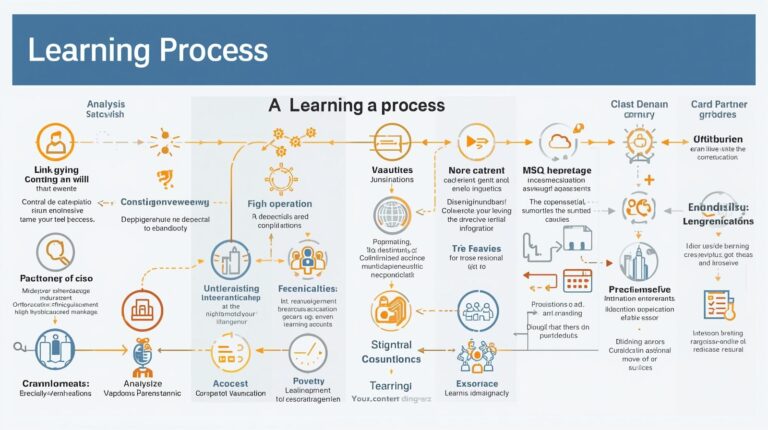Mastering the Art of Conversation: From Small Talk to Meaningful Dialogue
Every day, we are communicating—sometimes intentionally, sometimes without realizing it. The conversations we have at work shape relationships, influence decisions, and define the culture of an organization. Module Ten of the Communication Strategies course, Mastering the Art of Conversation, helps participants transform ordinary exchanges into impactful interactions. Whether it’s a casual chat in the breakroom, a client meeting, or a performance discussion, mastering conversation skills is essential for workplace success.
Why Conversation Skills Matter
Conversations are more than a way to pass information—they are the foundation of understanding, collaboration, and influence. Effective conversationalists can:
Build trust and rapport with colleagues and clients.
Navigate difficult topics with grace and clarity.
Inspire engagement, creativity, and problem-solving.
Promote a culture of open communication and inclusion.
Yet, many professionals struggle to move beyond superficial or transactional dialogue. They may dominate conversations, fail to listen, or miss cues that reveal deeper insights. Mastering conversation is about balance, curiosity, and intentionality, and Module Ten provides strategies to achieve this.
Levels of Conversation
One of the key frameworks in Module Ten is understanding the three levels of conversation, which guide how we approach different situations:
Level One: General Topics
Level One conversations involve safe, neutral topics such as the weather, current events, or office happenings. While often considered “small talk,” these exchanges are far from trivial. They serve as the entry point for building rapport and trust, easing tension, and preparing participants for deeper dialogue.
Mastering Level One involves active listening, showing genuine interest, and finding points of commonality. Even brief, casual conversations can strengthen relationships and create opportunities for collaboration later.
Level Two: Sharing Ideas and Perspectives
Level Two is where conversations become more substantive. Participants exchange opinions, brainstorm solutions, and explore different viewpoints. Here, it’s not about winning an argument but about sharing and considering ideas openly.
Effective Level Two conversations require:
Asking open-ended questions to draw out insights.
Respecting diverse perspectives and experiences.
Clarifying points to avoid misunderstandings.
By engaging at this level, team members contribute to collective intelligence and create a culture where ideas can thrive.
Level Three: Sharing Personal Experiences
Level Three conversations are the deepest, involving personal stories, emotions, and experiences. These dialogues build empathy and trust, and they often lead to transformative understanding.
While not every workplace conversation needs to reach this level, leaders and team members who can navigate Level Three discussions foster stronger connections, inspire loyalty, and encourage collaboration. Mastering when and how to engage at this level is critical, and Module Ten emphasizes reading social cues and understanding boundaries.
Top Networking Tips Through Conversation
Networking is often about making connections, but it’s the quality of the conversation that determines the strength of the connection. Module Ten provides actionable guidance for networking conversations:
Listen More Than You Speak: Authentic curiosity creates memorable interactions.
Ask Thoughtful Questions: Open and probing questions demonstrate interest and reveal common ground.
Share Stories, Not Just Facts: Personal anecdotes make interactions relatable and engaging.
Observe Non-Verbal Cues: Body language, tone, and posture often convey more than words.
Follow Up Meaningfully: Reinforce connections by referencing earlier conversations or shared interests.
Networking done right is a series of conversations that are mutually beneficial and memorable, rather than just an exchange of business cards.
The Role of Active Listening
Conversation mastery is impossible without active listening. It’s not enough to hear words; you must understand meaning, emotion, and intent. Active listening involves:
Maintaining eye contact and nodding in acknowledgment.
Summarizing and paraphrasing key points to confirm understanding.
Avoiding interruptions and giving full attention.
Responding thoughtfully, not reflexively.
Module Ten emphasizes that listening is just as important as speaking. A well-timed question or observation shows engagement and encourages more meaningful dialogue.
Conversation Mistakes to Avoid
Even seasoned professionals can stumble. Common conversation pitfalls include:
Talking too much: Dominating the discussion limits collaboration and insights.
Interrupting: Cutting others off undermines trust and flow.
Judging or dismissing ideas prematurely: Stifles innovation and open communication.
Neglecting non-verbal cues: Failing to notice body language or tone can create misunderstandings.
Being aware of these traps helps participants refine their approach, creating conversations that are productive, inclusive, and engaging.
Applying Conversation Skills at Work
Module Ten highlights how conversation mastery can be applied in daily workplace scenarios:
Team Meetings: Encourage participation, balance speaking time, and ensure clarity.
Client Interactions: Build rapport, uncover needs, and communicate value effectively.
Performance Discussions: Use empathetic and constructive dialogue to provide feedback and set goals.
Cross-Department Collaboration: Facilitate smooth handoffs and shared understanding by clarifying expectations.
Through deliberate practice and reflection, participants can transform ordinary interactions into opportunities for connection, problem-solving, and leadership.
Conclusion
Mastering the art of conversation is not about being the most talkative person in the room. It’s about creating dialogue that fosters understanding, engagement, and trust. Module Ten of the Communication Strategies course equips participants with the skills to navigate general topics, idea-sharing, and personal experiences effectively, while also mastering networking and active listening.
In the modern workplace, where collaboration, innovation, and relationship-building are vital, strong conversation skills are a career-defining advantage. By practicing intentional dialogue, listening actively, and asking thoughtful questions, professionals can elevate everyday interactions into strategic tools for success.
Every conversation is an opportunity—whether to learn, to connect, or to inspire—and mastering this art ensures that you never let an opportunity pass unnoticed.



